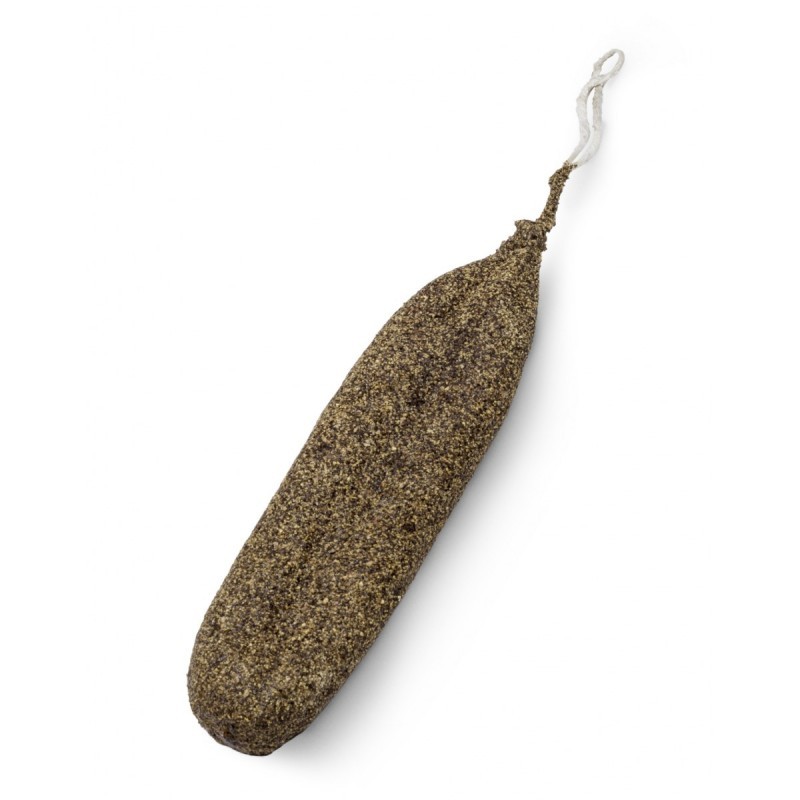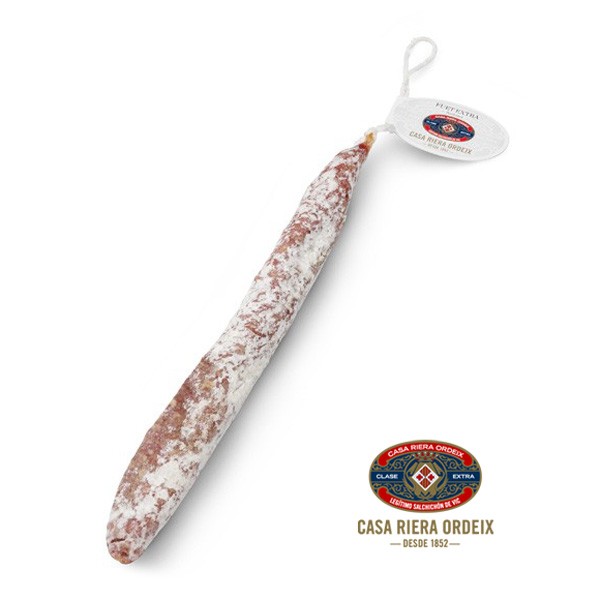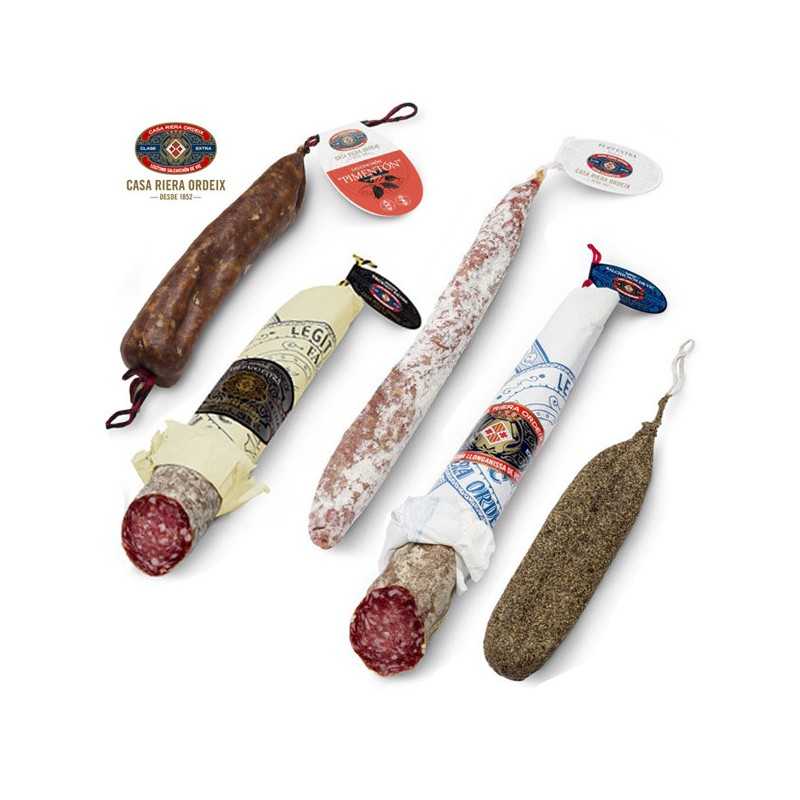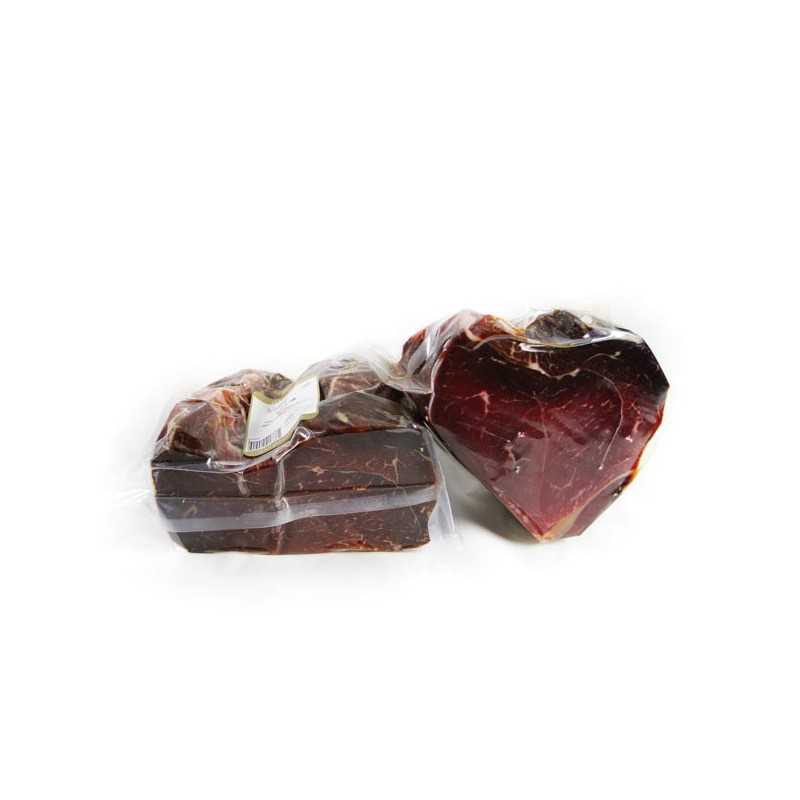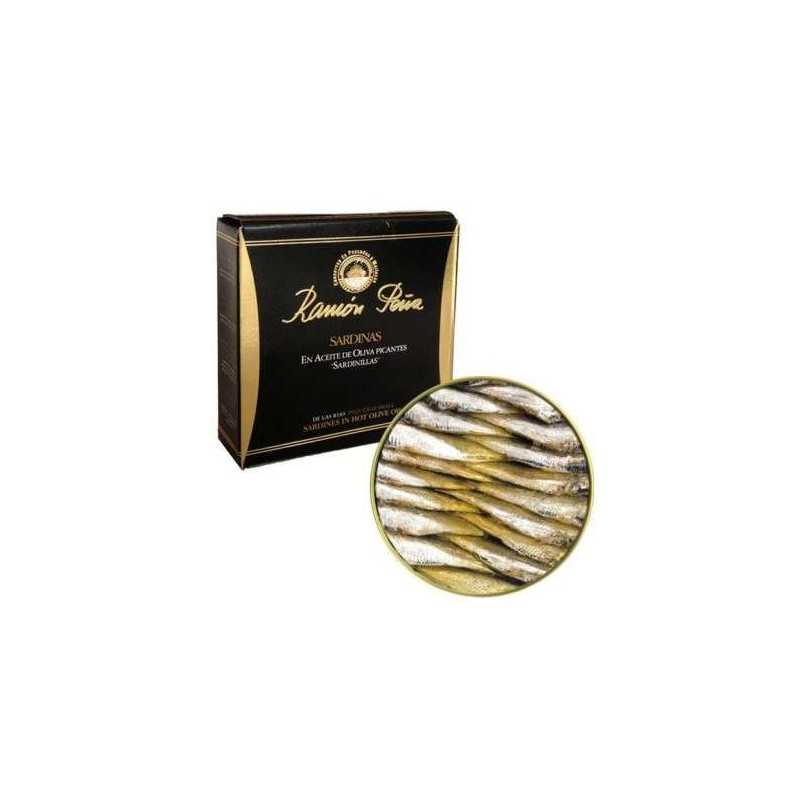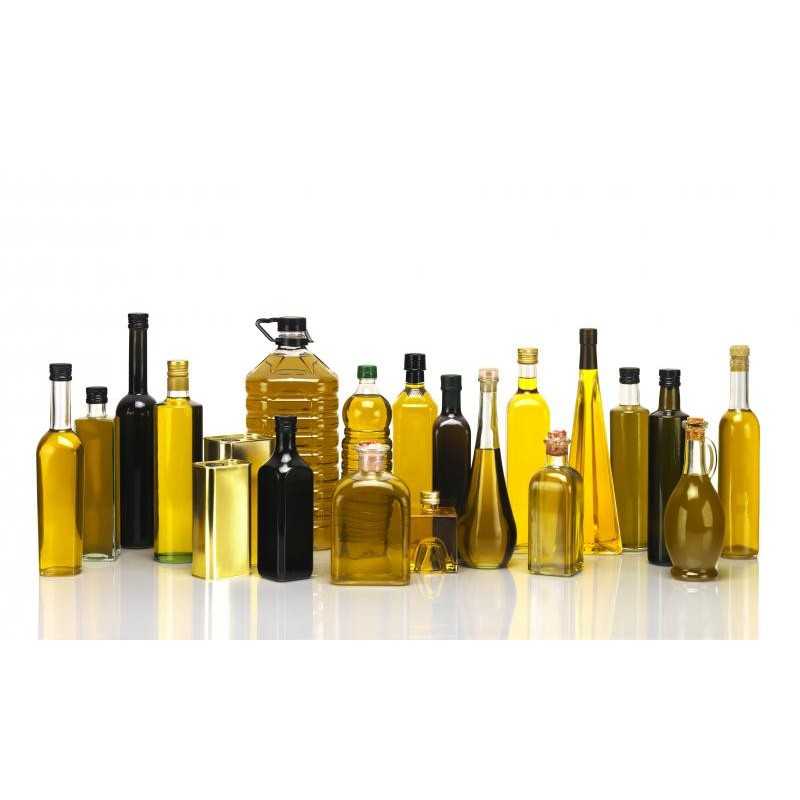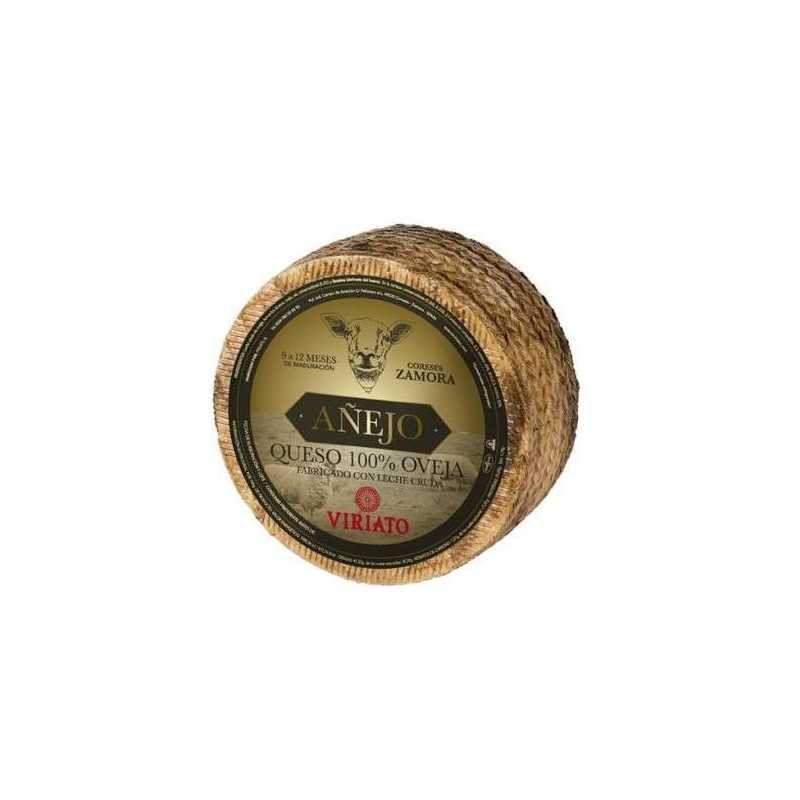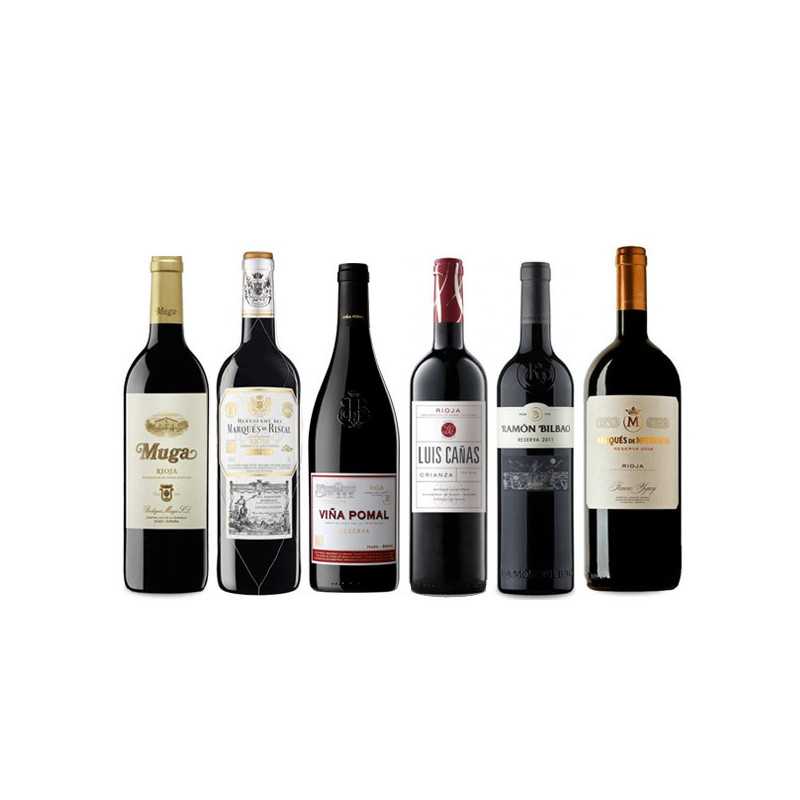The Salchichón
Our salchichones
1. What is salchichón?
Salchichón is a cured sausage made from pork lean meat, fat of ground pork and seasoned with spices, mainly pepper, which can be grounded or whole grains. The black pepper and the spices with which it is seasoned is what gives its special flavor, which makes it appeal to both the oldest and the youngest.
In addition to the traditional sausages from Spain, we can increasingly find more varieties of sausages, such as those covered with black pepper, sweet or truffled paprika.

2. Preparation of salchichón
Its preparation is done by chopping the pork meat that has been previously selected and mixing it with the bacon, giving it some unctuousness. Subsequently, both the minced meat and the bacon are seasoned with salt, pepper and more spices, such as nutmeg or cloves.
Once the meat is mixed, it is left to mature for approximately 24 hours and to later stuff the meat. The meat is left to dry in a room at a controlled temperature until getting a delicious salchichón.
How to recognize the salchichón by its appearance?
One of the most characteristic features of salchichón is its intense and brilliant red color. Also, the cut is homogeneous, smooth and color is well linked, without presenting any weird discolorations. With a naked eye you can perfectly differentiate between pieces of meat, small cubes of fat and peppercorns (in case of not being ground).
Its red inside contrasts with its exterior in white formed of a light white flora created during the drying process.
Salchichón has a firm and compact texture; it also has a delicate and sweet taste that contrasts with spicy spices, giving the aroma and flavor so characteristic.
Our sausages
3. History of salchichón
Salchichón is a sausage of Greek and Roman origin. Before the time of the Roman Empire, the guts of some animals were already used to preserve meat and keep the feed during the year. In the 16th century, with the arrival of the Arab empire to the Iberian Peninsula, sausages began to be made intensively. During this time, Iberian sausages gained special importance as a sign of resistance to the Arab conquest.
The origin of the elaboration of the variants of salchichón and other sausages comes from the discovery of America, in the year 1492. Thanks to this, new spices arrived to season the sausages.
4. Types of sausage
Types of salami in Spain
Salchichón is one of the best valued sausages in Spain, which has numerous varieties. Its varieties and types are the following:
Iberian salchichon
Iberian salchichon comes from Iberian pigs, which can be cebo, cebo de campo, bellota or bellota pata negra. As with Iberian hams, this type of sausage is indigenous to the Iberian Peninsula and may contain a purity of the Iberian breed of 50%, 75% and 100% Ibérico de bellota.
It comes from areas of Extremadura and Salamanca. It is made using lean Iberian pork meat mixed with fat, pepper, salt and oregano. Like the other variants, it is also left to air dry.
Salchichón from Vic, Llonganissa
Salchichon from Vic is other of the best valued types of salchichon in our country, both inside and outside our country. As its name indicates, this type of sausage is traditional from Vic, a town located in Barcelona.
Its elaboration is carried out mainly based on meat from white pigs, using parts of the pig with low fats that are selected to make this sausage. Once the meat has been minced and kneaded, it is macerated for 2 days minimum and stuffed. Afterwards, they are dried for a period of approximately 45 days. The characteristic aroma and flavor of this sausage is given by the typical fungal flora that takes place during the maturation and marinating processes. Normally this type of sausage is presented in “velas" due to its diameter and length range between 7 or 8 cm and 50 or 60 cm respectively.
This precious sausage has the distinctiveness of Protected Geographical Indication, the reason why its label will be supplied by the Regulatory Council of the I.G.P. “Salchichón de Vic or Llonganissa de Vic”.
Salchichón from Aragon
This traditional sausage comes from pigs raised in Teruel. It is also often called "Hígado de Calamocha" since it also contains lean meat from the liver of the pig. It is flavored with marjoram, nutmeg shell, black and white pepper. Its gelatinous appearance is what differentiates it from other types of sausage.
Cular salchichón
This type of sausage is made exclusively using meat from Iberian pigs, made with the same ingredients of the Iberian sausage. This name is given by the part of the pig's gut in which it is stuffed. Due to the type of meat with which this sausage is made, it is typical from the areas of Salamanca and Ávila.
Wild boar salchichón
This type of sausage is made using pork and wild boar fats. Wild boar meat is drier since it is a game animal, the reason why both types of meat are used. Its flavor is strong and marked.
Deer salchichón
This type of sausage is made using deer meat, characteristic for its pink color and intense aroma. In terms of its nutritional values, it is low in calories and cholesterol.
Turkey salchichón
This sausage is made using turkey meat and is very characteristic for its organoleptic characteristics, since its meat is very low in fat.
Chocolate salchichón
This type of sausage is sweet. It is made using chocolate instead of lean pork, together with dried fruits, walnuts and hazelnuts instead of bacon.
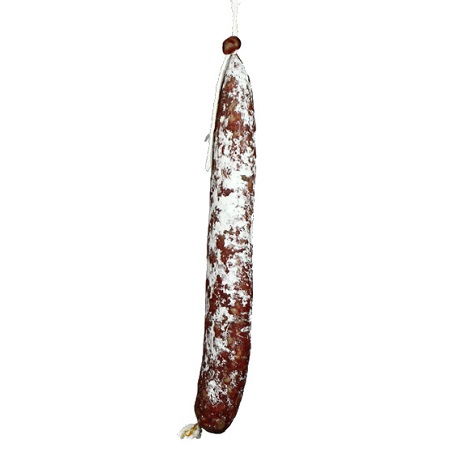
Types of sausage in the world
Types of sausage or salami in Europe
Salami from Italy (Salame)
This popular sausage of Italian origin is very similar to the salchichón. It is made using a mixture of pork and beef that is then seasoned and smoked or air-dried.
There are many varieties of Salami throughout Italy, some of them even have Protected Designation of Origin (P.D.O.).
Among the most popular salamis we find the salami Milano (from Milan); Felino salami (which comes from the village of Felino), highly valued for its quality; and the Nápoli salami (from Naples), that contains beef and is more spicy.
Téliszalámi from Hungary
This type of salchichon is of Hungarian origin, made using mangalica pork seasoned with spices, such as white pepper or allspice. It is cured in the open air and slowly smoked.
Thanks to the international recognition that this type of salami has, it has had the Protected Designation of Origin from the European Union Szegedi téliszalámi since 2007.
Cooked or blanched sausage
It is a variant of European preparation. It has an intense pink color and its appearance is very attractive. Given its cooking, it must be consumed more quickly.
Types of salami in Central and South America
Salame from America
Salami is a well-known sausage from Central and South America. In general terms, it is very similar to the Milano salami and it is one of the most popular sausages. This type of sausage is well known in the southern part of South America. There are different types of salamis depending on the internal texture and the area in which they are popular.
Salchichón with pistachio from Venezuela
It is a variant of the traditional salami that has pistachios. It is quite well known in Venezuela.
Salchichón “cervecero”
This sausage is better known. It is well known among South American countries, especially in Chile. It is made from beef, veal, pork or even all three combinations. It is made using natural pig casing, boiled and finally roasted. Commonly, it is consumed with other preparations.
5. Pairings and sausage tasting
Salchichón is usually consumed cut into slices or pieces. For a better tasting, it is recommended the slices be thin. For a more visually pleasing result, tilt the knife when slicing.
It is very common to eat it as a sandwich and as an appetizer, although we can also consume it alone. D.O. Manchego cheese are also a good accompaniment to this tasty cold meat. The softness of the sausage is combined perfectly with the strong flavor of this cheese. The softness of the sausage is perfectly combined with its strong flavor.
As for pairings, as it is seasoned with hot spices (mainly pepper) that add intensity to its flavor, it is recommended to taste the salami accompanied by young and fruity wines. There are those who claim that sausages pair better with red wines that meet these characteristics and that have been made from the Garnacha grape. If you prefer to pair it with white wines, it is recommended that it be with wines based on Sauvignon Blanc or Riesling.

Our sausages
6. Differences between salchichón and other sausages
It is easy to confuse salchichon with other sausages such as fuet or longaniza given their similar appearance. Some simple indications will help us to be able to differentiate them:
Sausage, longaniza and fuet
Due to their strong similarities (especially between salchichón and longaniza), theses sausages are often confused, making it difficult to distinguish them from each other.
Fortunately, if you know their main difference, it would not be that much difficult to distinguish them. The product thickness is the key. The casing used in these three sausages has different calibers. Salchichón is the thickest, followed by the longaniza, and then a little further away, there is the fuet. The latter is easier to recognize because it is the finest and thinnest of the three.
Another distinguishing feature is the maturating time used, which is directly related to the difference in diameter casings used. A larger diameter casing requires longer maturation.
If we focus on the spices used in flavoring, fuet is much easier to distinguish from their two companions as it normally does not usually carry pepper. Meanwhile, salchichón and longaniza usually have a flavor quite similar.
Salchichón and salami
Their main difference is the origin of both sausages. While the origin of salchichon is Spain, salami’s origin is Italian.
Also the diameter is another differentiating element that helps us to be able to distinguish them. Pepperoni is much thinner and narrower than salami.
Salchichón and chorizo
It is the easiest pair of sausages to differentiate since its color is visually different. The reason lies in the seasoning used in its preparation and also the drying period.
In both sausages the meat is minced, but in the case of the salchichon, the minced meat is much finer than that of the chorizo.
The great differentiating element between the two is the seasoning used. While the salchchon contains pepper and other hot spices, the chorizo contains paprika, garlic, oregano and nutmeg.
As a last differentiating element we find the drying time, fundamental in the chorizo. It can even reach that of the ham since it will determine the quality of the product.
7. Curiosities of the salchichón
Salchichon nutritional information
Salchichón is a food that has high nutritional benefits. Due to its high content of B vitamins (B1, B2 and B12), plus minerals like calcium, zinc, iron and magnesium, is highly recommended during childhood and adolescence. It helps the formation of bones and tissues, as well as combating anemia.
Its acid oleic content is recommended for our cardiovascular health and its monounsaturated fatty acids help to lower "bad" cholesterol.
It also contains lactic active plant, quite similar to the one that is found in yogurt which has recognized beneficial effects for our body.
It is recommended to incorporate salchichón into children’s and adult’s diets. Its great contribution of vitamin B and its high level in sodium help in obtaining energy especially when we need to recover after and intense workout.
In a nutshell, a salchichón sandwich is the best snack for the smaller ones and not the so small.
Traditional sausage: a guiness record sausage
In 2012, a company from Córdoba produced the longest sausage in the world with 210 meters in length in one piece. This original sausage was made by a family business located in Rute, as a marketing strategy in order to contribute to the Christmas campaign of the town where they are located, and which tried to enter the Guinness Book of Records. It weigh is 260 kilos.
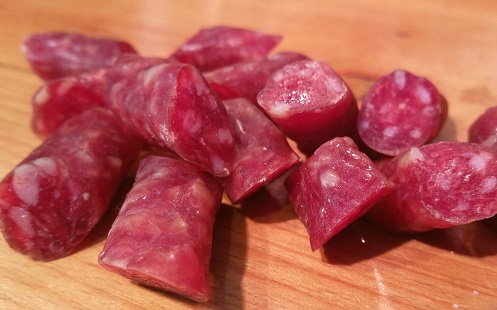
8. Recipes with salchichón
It is very common to eat salchichón in Spanish sandwiches and tapas. Despite not being widely used in the preparation of dishes of our cuisine, we recommend below some simple and delicious recipes:
Tortilla cheese and salchichón
Ingredients: two eggs, salchichón cut into small pieces, a few thin slices of cheese and salt.
Preparation: We beat two eggs with a pinch of salt. We add the sausage and cast the mixture onto the pan preheated with a splash of oil.
Then we put thin slices of cheese on top and carefully wrap the tortilla until it is perfectly cooked.
Serve on a plate and to enjoy it as a main dish or as a hot snack.
Salchichón and cheese sandwich
Ingredients: bread, salchichón, cured cheese and extra virgin olive oil.
Preparation: Open the bread in half, add a splash of oil (to taste) and then put the slices of cheese and sausage. Ready!
Salchichón salad
Ingredients: lettuce, sausage cut into chunks (preferably), goat cheese, cherry tomatoes, nuts, olive oil and vinegar.
Preparation: once lettuce is cleaned, we add cherry tomatoes cut in half, salchichón, a slice of goat cheese and walnuts halved. We dress this salad with oil and vinegar.
We recommend to accompany this dish with white wine.
Salchichón and cheese puff pastry
Ingredients: puff pastry base for cooking, grated cheese, salchichón in thin slices and an egg.
Preparation: We extend the pastry base and place the slices of sausage across the surface, leaving uncovered a centimeter of one side. Then we cover it with grated cheese. The amount of product used will depend on everyone's taste.
Carefully we roll up the pastry, starting with the side with filling and pressing lightly with our fingers. The side without salchichón will help to close the puff pastry and to be handled without any complications.
Once it is rolled, it is time to cut it into slices of a centimeter or so. In a over tray where we previously will have put greaseproof paper, we place the slices taking into account not putting them so close with each other as they will grow a little.
As a final step we brush the slices with a brush dipped in beaten egg and introduce them in the oven preheated to 180 degrees. In about fifteen minutes will be ready to eat.
You can taste them hot or cold. They are a delicious snack perfect for meetings with friends.
Salchichón Pizza
Ingredients: pizza base, tomato sauce, oregano, grated cheese, mozzarella cheese and sliced salchichón.
Preparation: We extend the pizza base. Helping us with a spoon or knife we extend tomato sauce over the entire surface. We place the mozzarella all over the base and then the slices of salchichón, distributing them evenly. Then we sprinkle over cheese and oregano to taste.
Preheat oven to 180 degrees and once it is ready, we introduce the pizza about 15 minutes or until it is ready. Carefully remove it from the oven and cut into those typical triangles.
This is an original way to make a pepperoni pizza with a Spanish taste.
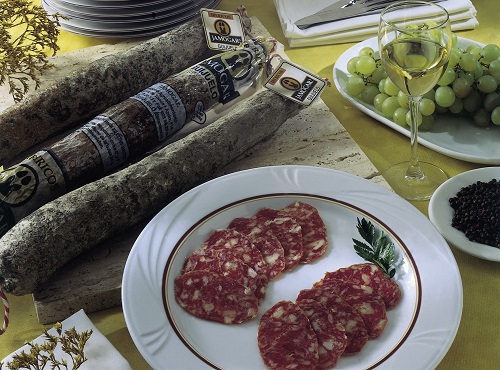
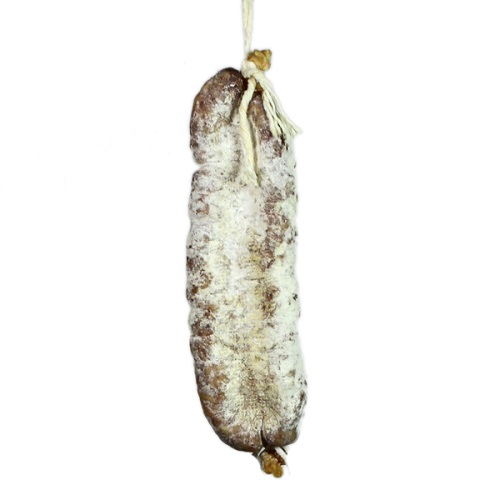
 4,88 / 5
4,88 / 5 















